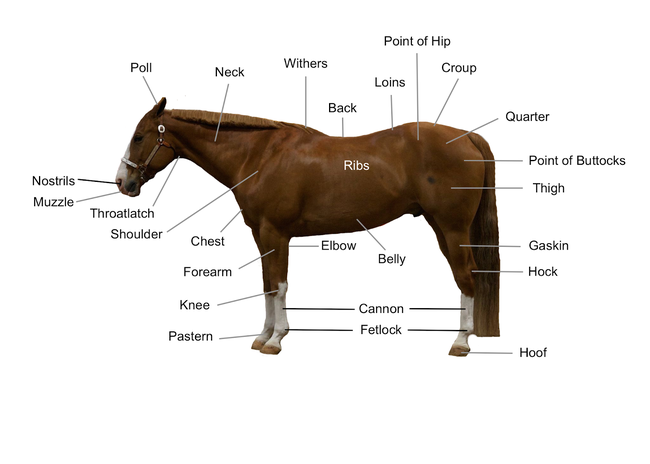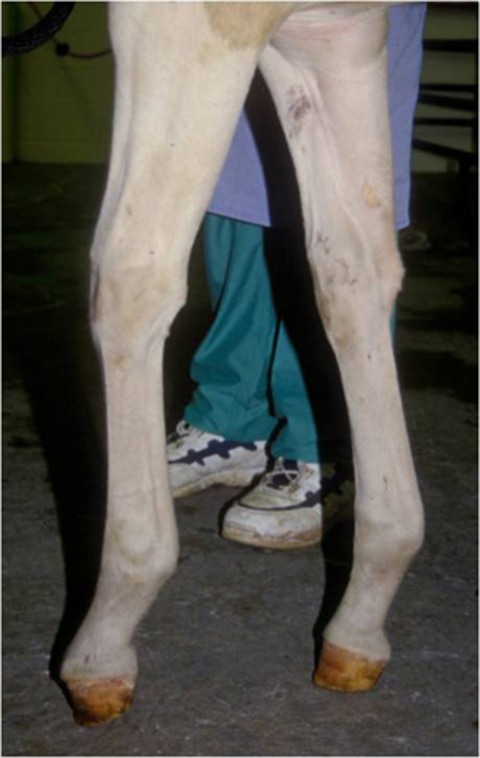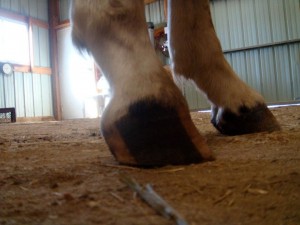club foot horse definition
Called also talipes. A club foot alters a horses hoof biomechanics frequently leading to secondary lamenesses.
But what does the.
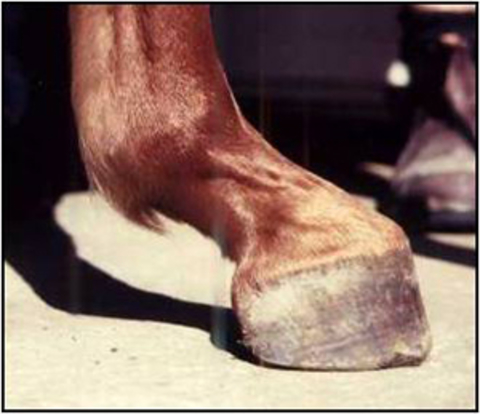
. About half of children with clubfoot have it in both feet. Even though its a common issue a club foot can actually be a serious issue. A club foot is an upright foot caused by a shortening of the tendon and muscle of deep digital flexor unit.
However for the best outcome of treatment it is crucial for the veterinarian to identify and begin a strategy as early as possible. The affected hoof is usually stumpy with a short toe and long upright heel. Without treatment the foot remains deformed and people walk on the sides of their feet.
Clubfoot is a birth defect where one or both feet are rotated inward and downward. Flexor tendon disorders are associated with postural and foot changes lameness and debility. In talipes varus the most common form of clubfoot the foot generally turns inward so that the leg and foot look somewhat like the letter J.
A club foot is an upright foot caused by a shortening of the tendon and muscle of deep digital flexor unit. Ric Reddens provided the four-grade system to measure this severity. When noticed and treated early the farrier or veterinarian can greatly improve the prospect of normal hoof development.
Club foot is defined by the UC Davis Book of Horses as a flexural deformity of the coffin joint resulting in a raised heel. This article will explain in-depth the causes treatment and management of a club-footed horse. Compare talipes equinovarus talipes equinus talipes valgus talipes varus.
Uterine malposition teratogenic insults arthrogryposis and genetic defects have been either implicated or proved to cause contracted limbs in newborn foals. Example of a club foot. Clubfoot can be mild or severe.
The term club foot actually refers to a congenital defect of the foot and according to The Free Dictionary the medical definition is a condition in which one or both feet are twisted into an abnormal position at birthTrue clubfoot is characterized by abnormal bone formation in the foot In the horse hoof growth is dictated in large part by weight distribution. Many horse owners believe a clubbed foot is a hoof blemish. In the past the condition was defined as any hoof angle that exceeded 60 degrees but the reality is not quite that exact.
Club foot refers to a tendon flaw that causes the hoof to be very upright. Medical Definition of clubfoot. With frequent trimming the heel has been kept low and the coffin bone placed in a near-ground parallel orientation.
This may lead to pain and. Club foot is one of the most common deformities in the horse world. Club foot can occur before or after birth in foals.
Grade 3 club foot has an anterior hoof wall described as dished with the heel twice as wide as the toe. This is the milder case of club foot. Horses affected with club foot develop a flexural deformity of the coffin joint due to a shortening of the musculotendinous unit that starts high up in the limb and inserts on the coffin bone in the foot resulting in an upright conformation of the foot.
Clubfoot is a fairly common birth defect and is usually an isolated problem for an otherwise healthy newborn. Approximately 50 of cases of clubfoot affect both feet. Grade 1 is 3-5 degrees greater than the opposing foot.
Any of numerous congenital deformities of the foot in which it is twisted out of position or shape. A foot affected with clubfoot. Often club foot affects both front legs with one being more severe than the other.
This case is of radiologically confirmed clubfoot in a 5 yo Morgan mare. Not to be confused with the club foot deformity of humans. True clubfoot is characterized by abnormal bone formation in the foot.
The excessive pull on the deep digital flexor tendon DDFT turns the coffin bone downward loading shifts to the toe area and the hoof changes shape in response. A normal angle for a. They may be congenital and therefore identified in newborn foals or acquired at an older age.
Club feet result from genetic and environmental conditions. A club foot horse is typically recognized and defined as having one front hoof growing at a much steeper angle than the other with a short dished toe very high heels extremely curved wall and straight bars. By Heather Smith Thomas.
The affected foot and leg may be smaller than the other. The trim was started at age 3 and the second picture shows the progress after about one year. This has enabled the dish in the toe wall to grow out and.
In clubfoot the tissues connecting the muscles to the bone tendons are shorter than usual. There are four variations of clubfoot including talipes varus talipes valgus talipes equines and talipes calcaneus. Most horsemen define a club foot as hoof and pastern angle of more than 60 degrees making the foot more upright than normal.
Grade 2 has a hoof angle of 5-8 degrees greater and the heel will not touch the ground when trimmed to normal length. Unlike other farm animals the horse is serviceable only when in motionAny abnormal deviation in the structure or action of a horse can render it partly or completely useless. Contracture of the flexor muscles and deep digital flexor back tendon which attaches to the coffin bone inside the hoof results in the.
The term clubfoot gets thrown around a lot when describing the way a horse particularly a sale prospect looks. Most of the time it is not associated with other problems. Ance of the foot where there is little expansion of the hoof capsule giving a club-like appearance but this is an overly simplistic definition.
My horse has a club foot. The clinical presentation in the horse can range from a mildly upright and a small foot to one that is buckled for-ward with an angle greater than 90 at the distal. That strategy must be influenced by the severity of the club foot Dr.
After birth foals acquire club feet when the bones grow faster than the tendons. Grade one is classified by having a hoof angle that is at. Not to be confused with the club foot deformity of.
In a club foot the angle of the hoof and pastern in relation to the ground is abnormally steep. While there is no cure proper nutrition and management can make a happy lifestyle for a horse.

The Club Foot Is It No Big Deal Or A Deal Breaker
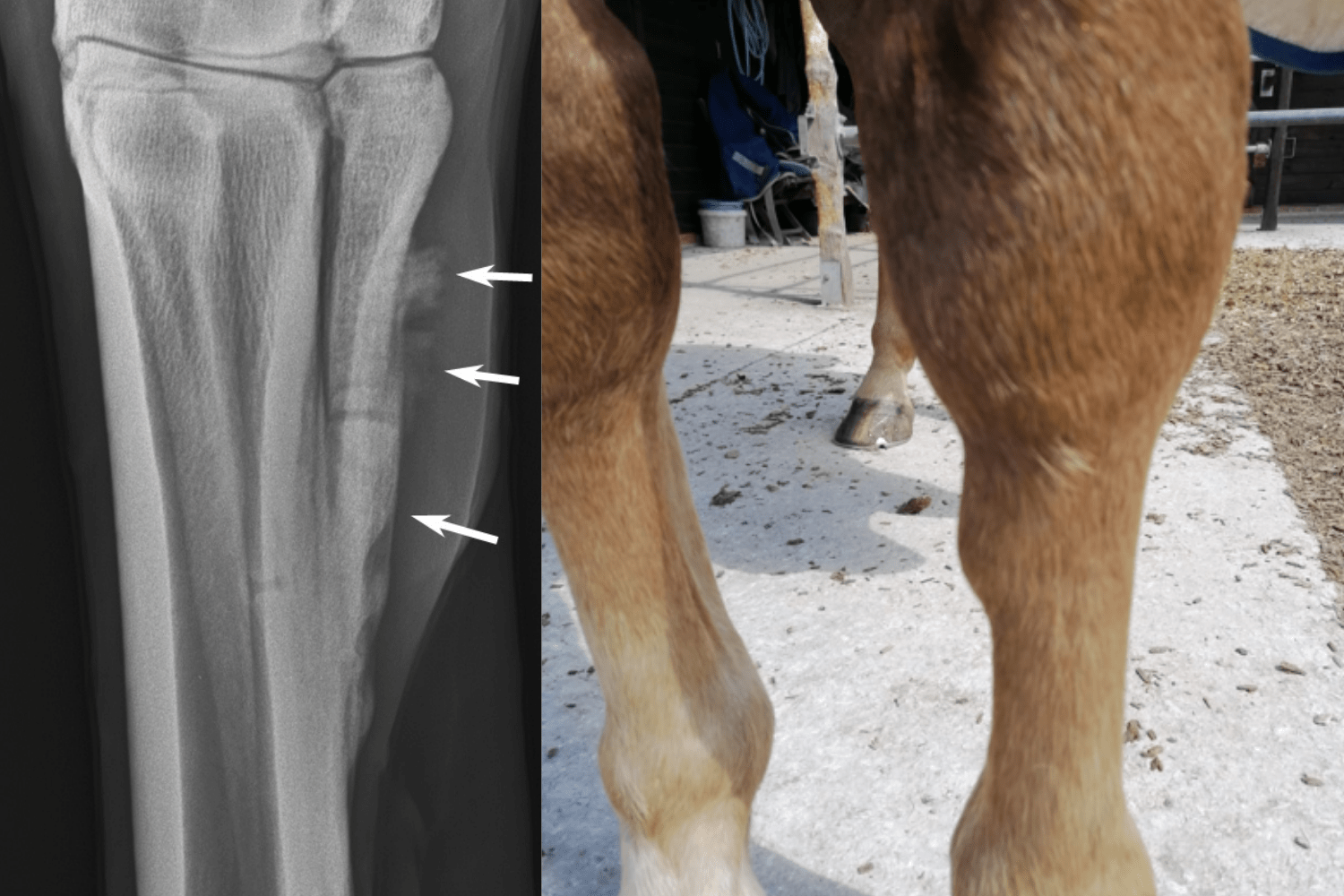
Splints Horse Health Programme

Fanaticism Words Definitions Understanding

Evaluating Horse Conformation Publications Horses Horse S Neck Horse Care
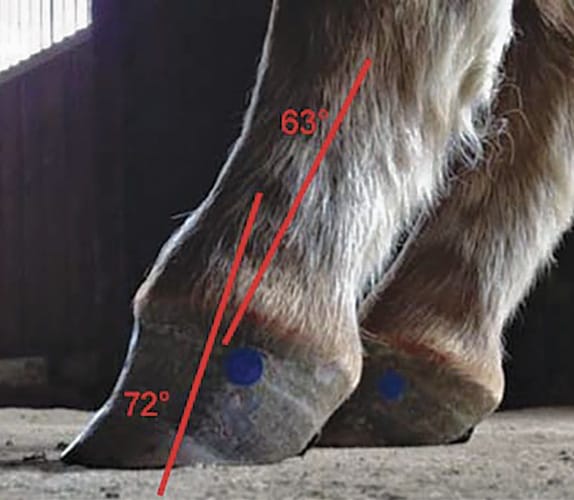
Defining And Fixing A Horse S Club Foot

Laminitis Fact Sheet Honeychop
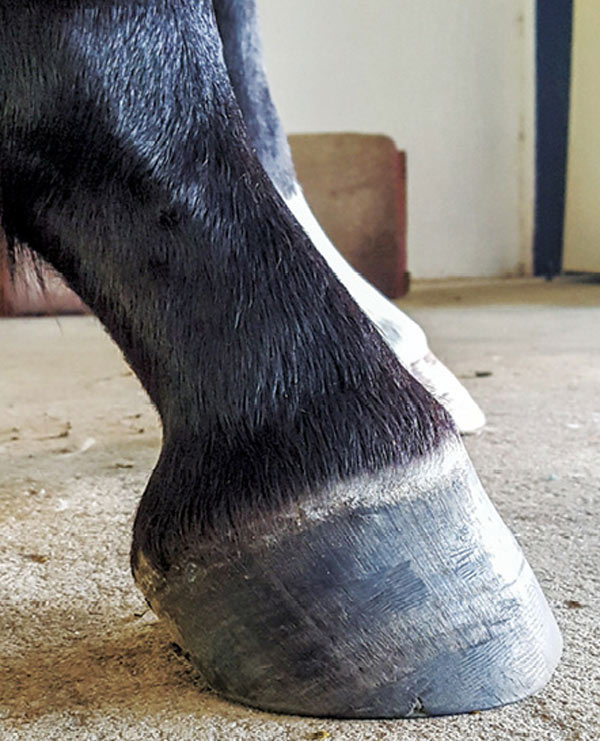
Club Foot Or Upright Foot It S All About The Angles

Equestrian Polo Polo Horse Equestrian Equestrian Events

Club Foot Or Upright Foot It S All About The Angles

Pin On Health Research Findings Remedies Tips And Great Images

Read And Make Jenny And The Cat Club 3 Kids Fashion Cat Club Little Dresses

Parts Of Horse Selangor Turf Club

Free Horse Unit Study Resources Horse Anatomy Horse Coloring Pages Horses



